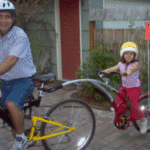The summer season is a time that people can take advantage of the warm weather, and get outside to play tennis, get out on the golf course, bike, or simply tend to their gardens. It is also a time when those aches and pains creep up unexpectedly, and you begin to question your age. The increased activities at this time of year can lead to overuse injuries, and one of the most common problems seen is tennis elbow.
What is tennis elbow? Typically, it is a nagging discomfort felt on the outside of the elbow. The pain can be brought on with simple tasks such as lifting, gripping, or even using a computer. Although commonly seen in tennis players and other racquet sports, you do not have to be a tennis player to suffer from this affliction. Another term for it is lateral epicondylitis. The pain can range from just being a nuisance to severe discomfort where even brushing your teeth is difficult to accomplish. Most people do not recall any specific injury that started their symptoms. It has a gradual onset, which can slowly worsen over time.
The problem involves a tendon that extends, or straightens out the wrist. With repetitive activities, this tendon gets overworked and starts to wear down. Small tears can develop where the tendon inserts on to bone. In severe cases, the tendon can detach completely. This particular muscle-tendon unit stabilizes the wrist when grasping an object, and therefore causes pain with simple daily tasks. Watch your wrist the next time you lift that pot of coffee. Those with tennis elbow are probably using their opposite hand.
How is it treated? The majority of patients respond to conservative management involving a specific exercise program and activity modification. The exercises are geared to strengthen the unhealthy tendon. One important point to remember is not to push through the pain. This often exacerbates the problem. For those that are uncomfortable with simple day-to-day tasks, a brace can be worn for pain relief. This acts as a cuff at the top of the forearm and can alleviate some of the discomfort. If the exercise regimen is not helping, then a steroid injection may be helpful. This can settle down any associated inflammation from the condition and give pain relief. A minority of patients does not respond to this conservative approach, and may require surgery to clean up the unhealthy tendon.
The same quality of pain can also be felt on the inside of the elbow. This is called golfer’s elbow, or medial epicondylitis. Rather than affecting the wrist extensors, this involves the tendon that flexes the wrist. The ulnar nerve lies adjacent to this tendon. When it gets irritated, you can feel numbness or tingling radiating down the forearm to the ring finger or pinky. The treatment for medial epicondylitis is the same as that for lateral tennis elbow.
If you do develop elbow pain that just does not seem to get better, call your doctor to confirm the diagnosis. Get started on the exercise program and be patient! This usually takes a minimum of 6 – 8 weeks to show signs of improvement. You’ll be back swinging that golf club before you know it.


